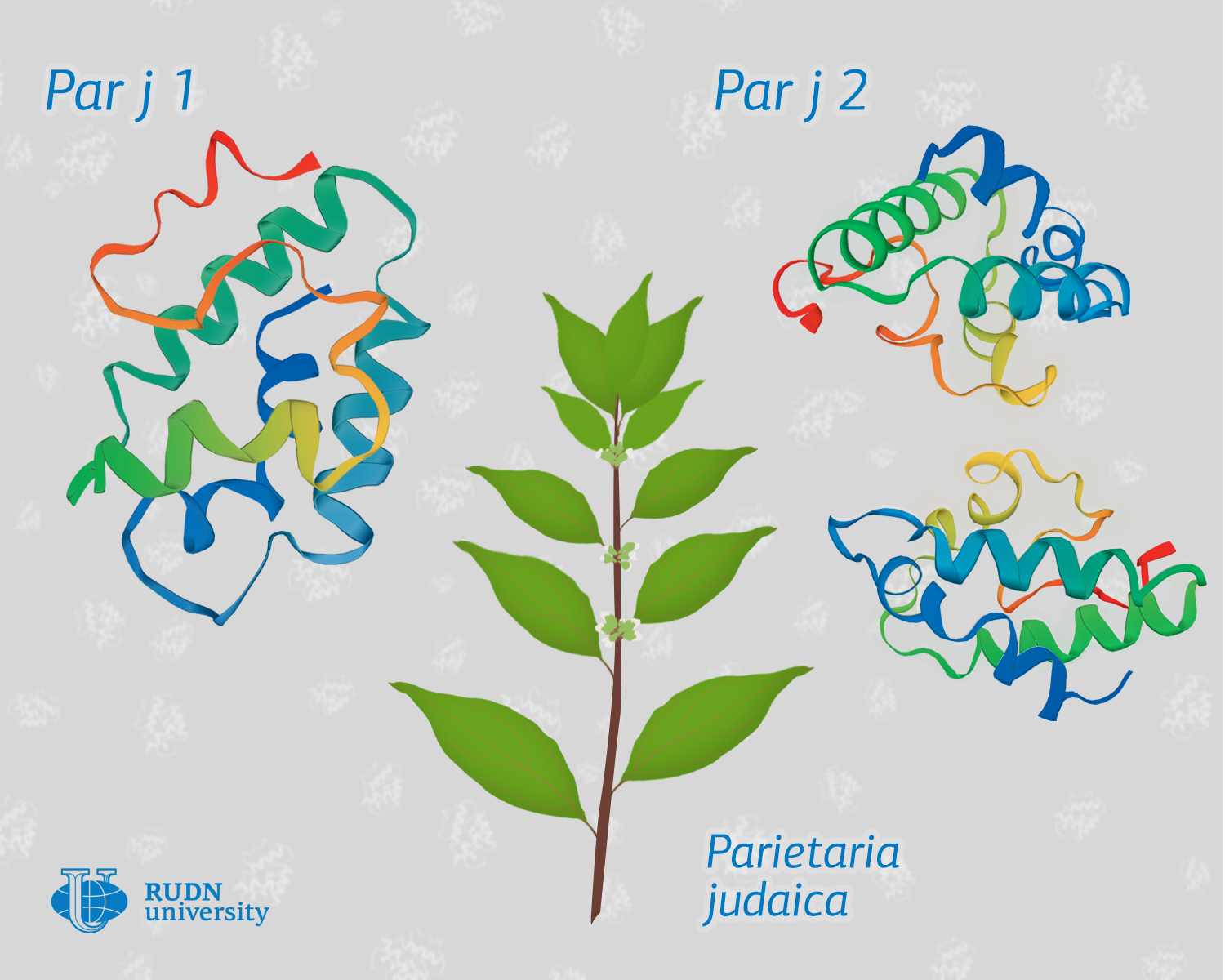RUDN University Immunologist offered a variant of the vaccine for allergies to Parietaria judaica

On the territory of the Mediterranean countries, Eastern Europe, Australia, the postennitsa Judaica plant is widely distributed, which has a long flowering period. Its pollen causes allergies. To get rid of it, patients need allergen-specific immunotherapy. But to create vaccines, you need to identify the most clinically significant allergen molecules that are similar to the main epitopes (parts of the allergenic macromolecule), which are recognized by the immune system as natural sources of allergies.
Professor Roman Hanferyan and colleagues found that the vaccine against postennitsa Allergy should include two main allergens of the plant-proteins Par j 1 and Par j 2. Previously published studies have stated that only Par j 1 is sufficient in vaccines.
Roman Hanferyan and his colleagues obtained artificially created genetically engineered proteins Par j 1 and Par j 2 using recombinant DNA transfection in insect cells. These proteins were more similar to natural Par j 1 and Par j 2 from Parietaria pollen extract in their physical and chemical properties than previously studied recombinant proteins synthesized by yeast cells.
“Insects are the only object (unlike eukaryotic cells, microbes, and yeast) that uses so-called baculovirus expression systems, which provide a high level of protein expression with simple glycosylation and posttranslational modifications, ease of scaling, and simplified cell growth. Due to the similarity of systems of posttranslational modifications of eukaryotes, the synthesized protein will be close (or identical) to the native form of the protein we need,” the immunologist explained.
Biochemists have investigated the ability of Par j 1 and Par j 2 to cross-interact with immunoglobulin E to understand whether one of the two proteins can replace the other. Immunoglobulins E are the main class of antibodies responsible for the development of hypersensitivity reactions. Analysis of experiments showed that immunoglobulins E in blood serum after its preliminary incubation with one of the proteins interact with the second added protein. The researchers concluded that although the allergens Par j 1 and Par j 2 are similar, they do not replace each other, and the Parietaria pollen Allergy vaccine should include both of these proteins.
Biochemists have tested how fully the resulting protein molecules reflect the diversity of epitopes of allergens Parietaria. To do this, artificial allergens Par j 1 and Par j 2 were mixed with blood serum samples of patients with allergies and after their interaction, the amount of residual immunoglobulins E was measured, bound to the added natural pollen extract. A mixture of par j 1 and Par j 2 proteins almost completely prevented the binding of immunoglobulin E and Parietaria pollen extract. Professor Hunterian concluded that these two proteins correspond to the natural epitope spectrum of allergenic molecules of pollens.
Basophil activation tests in vitro confirmed the ability of recombinant proteins Par j 1 and Par j 2 to cause allergies, therefore, it can be expected that in vivo they will also show allergenic activity.
Currently, there are already effective vaccines based on artificially obtained allergens for the treatment of hypersensitivity to pollen of birch and grasses, but there are no such vaccines for postennitsa. The joint discovery of Hanferyan and his colleagues from Russia, Austria, Italy and Spain was the beginning of research on a new vaccine, but the timing of its production has not yet been determined. Preclinical research is ahead.
Article in the journal Scientific Reports.
RUDN summarized the results of the scientific competition "Project Start: work of the science club ". Students of the Faculty of Physics, Mathematics and Natural Sciences have created a project for a managed queuing system using a neural network to redistribute resources between 5G segments. How to increase flexibility, make the network fast and inexpensive and reach more users — tell Gebrial Ibram Esam Zekri ("Fundamental Computer Science and Information Technology", Master's degree, II course) and Ksenia Leontieva ("Applied Mathematics and Computer Science", Master's degree, I course).
The National Demographic Report, 2023 Demographic Well-Being of Russian Regions (hereinafter - the National Demographic Report) was prepared by the scientific team of the Institute of Demographic Studies of the Federal Research Center of the Russian Academy of Sciences, the Vologda Scientific Center of the Russian Academy of Sciences, Peoples' Friendship University of Russia, the Center for Family and Demography of the Academy of Sciences of the Republic of Tatarstan, as well as with the participation of leading scientists from the Republic of Bashkortostan, Stavropol Krai, Volgograd, Ivanovo, Kaliningrad, Nizhny Novgorod, Sverdlovsk Oblasts and Khanty-Mansi Autonomous Okrug–Yugra.
RUDN summarized the results of the scientific competition "Project Start: work of the science club ". Students of the Faculty of Physics, Mathematics and Natural Sciences have created a project for a managed queuing system using a neural network to redistribute resources between 5G segments. How to increase flexibility, make the network fast and inexpensive and reach more users — tell Gebrial Ibram Esam Zekri ("Fundamental Computer Science and Information Technology", Master's degree, II course) and Ksenia Leontieva ("Applied Mathematics and Computer Science", Master's degree, I course).
What is your first association with the word “laboratory”? Flasks and beakers? Microscopes and centrifuges? Yes, many of us would answer the same way.
The National Demographic Report, 2023 Demographic Well-Being of Russian Regions (hereinafter - the National Demographic Report) was prepared by the scientific team of the Institute of Demographic Studies of the Federal Research Center of the Russian Academy of Sciences, the Vologda Scientific Center of the Russian Academy of Sciences, Peoples' Friendship University of Russia, the Center for Family and Demography of the Academy of Sciences of the Republic of Tatarstan, as well as with the participation of leading scientists from the Republic of Bashkortostan, Stavropol Krai, Volgograd, Ivanovo, Kaliningrad, Nizhny Novgorod, Sverdlovsk Oblasts and Khanty-Mansi Autonomous Okrug–Yugra.